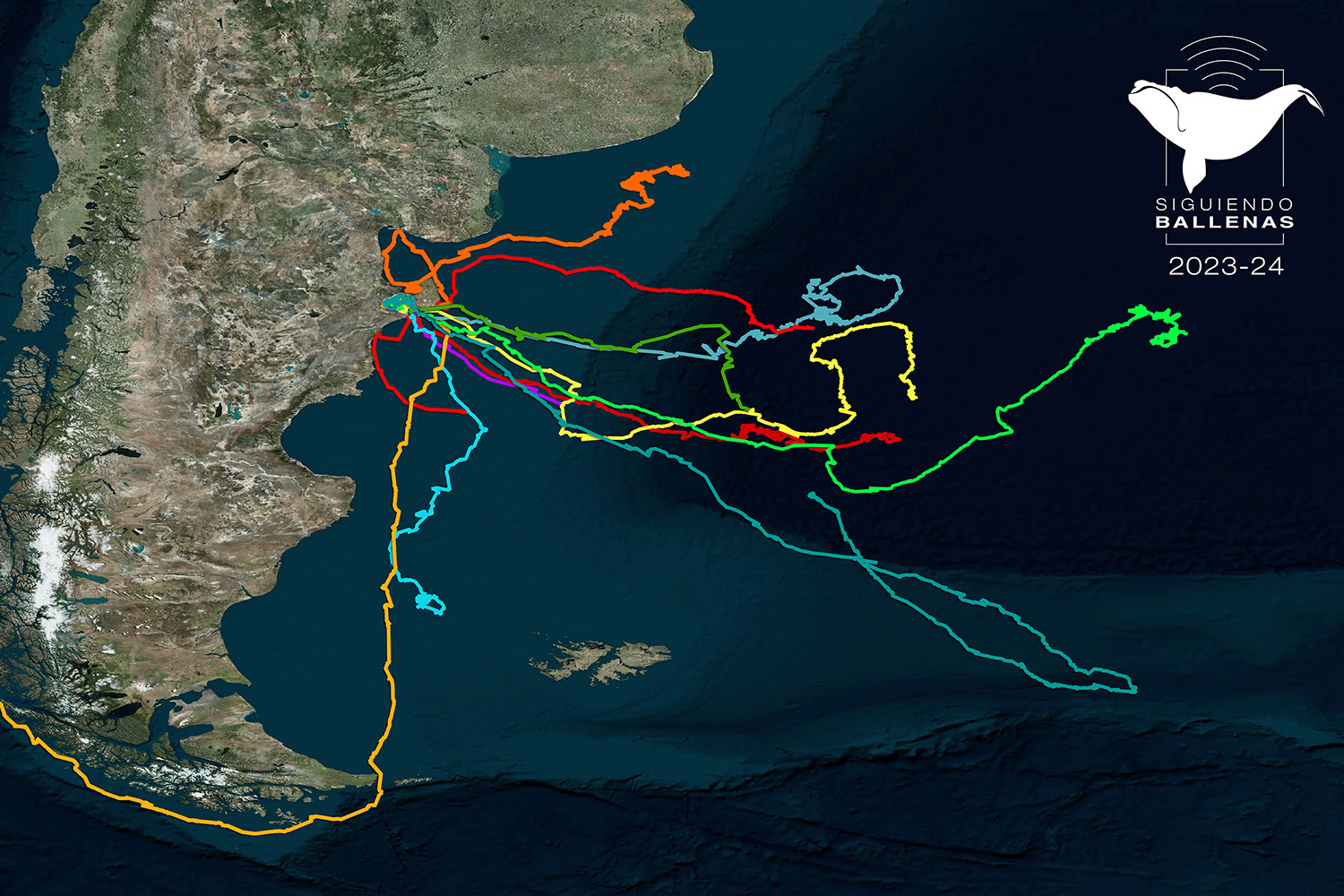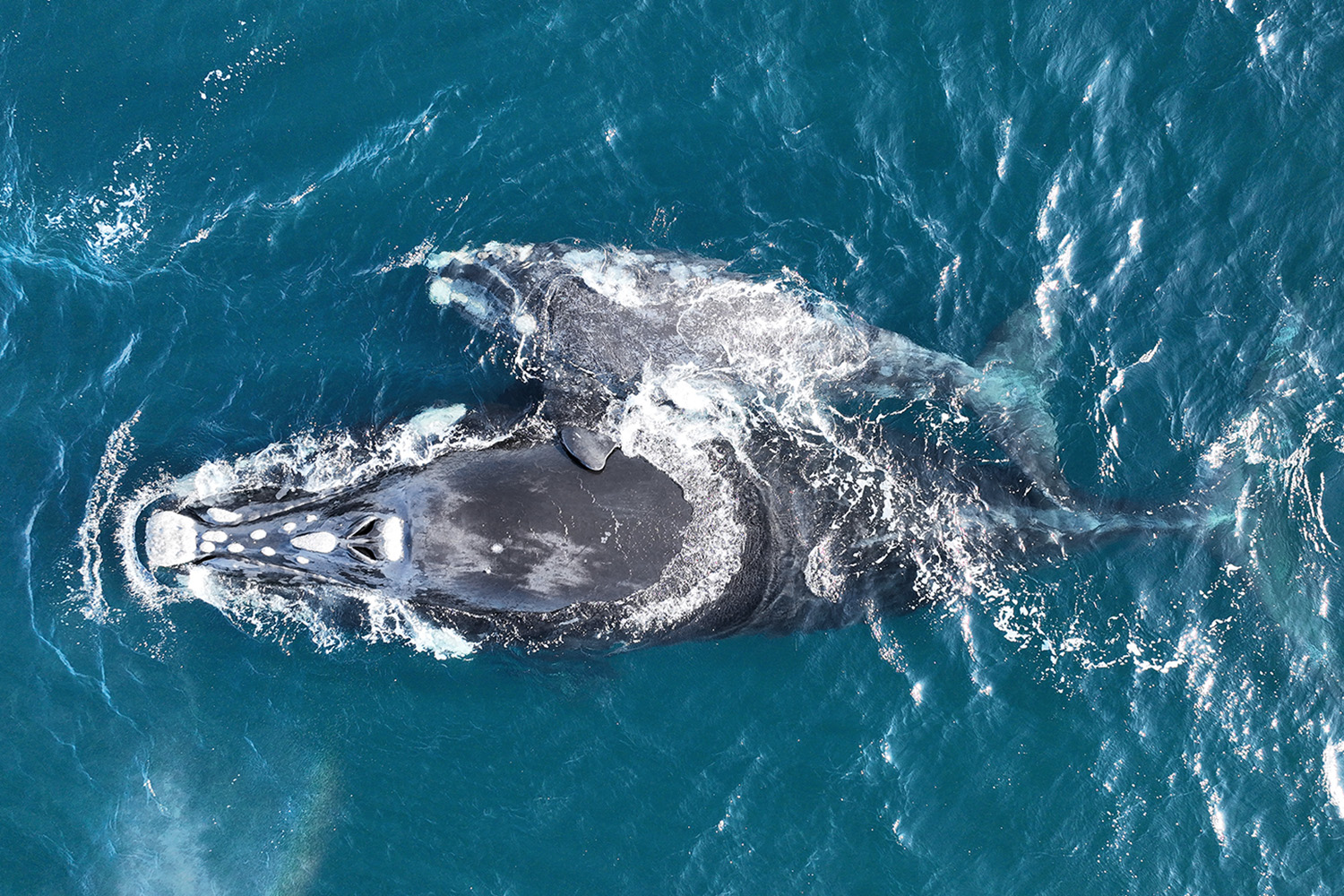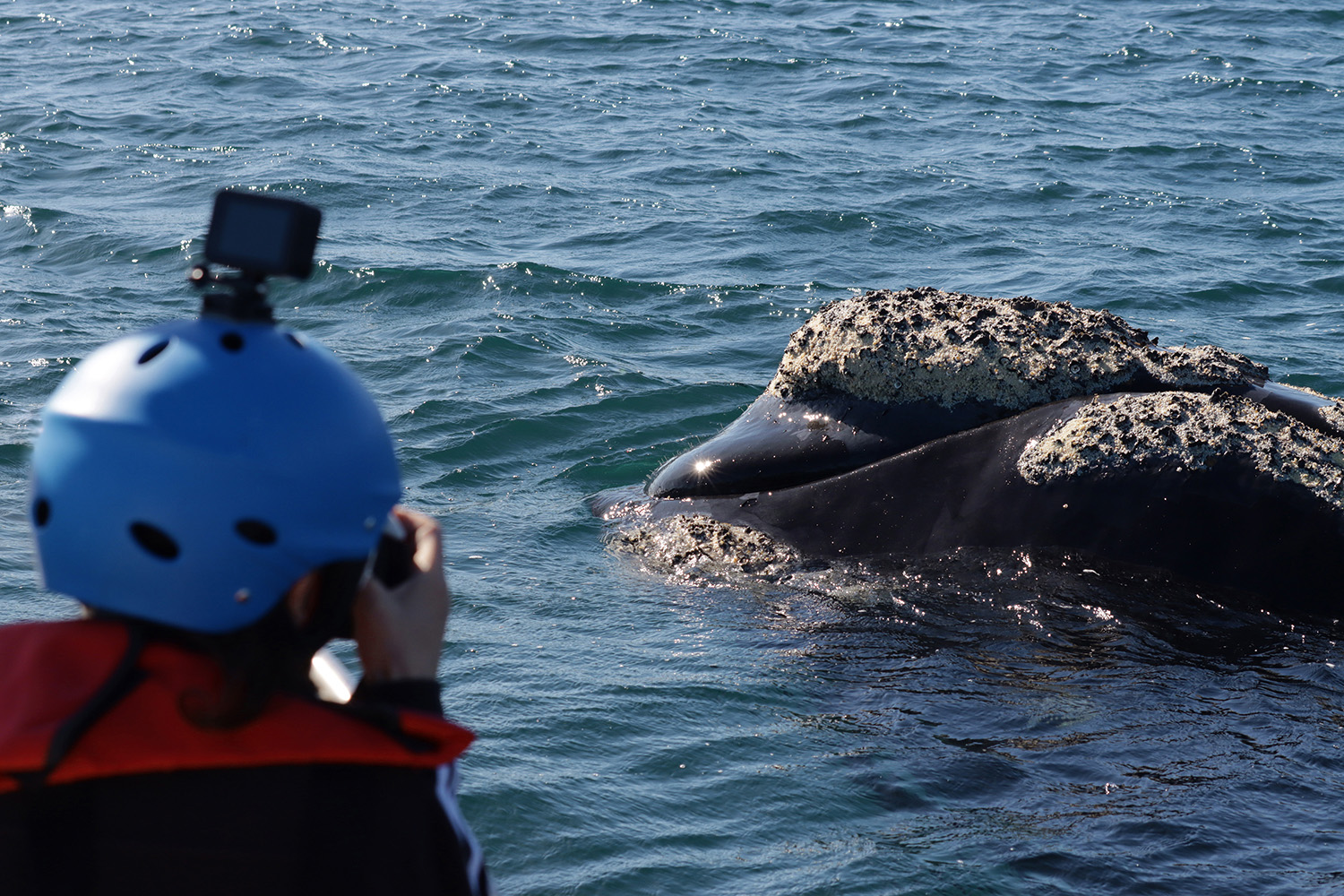A new season of the “TrackingWhales” project is now in full swing. This project has been recording the oceanic travels of southern right whales since 2014, to obtain information that is essential for the conservation of the species. This year, satellite transmitters were deployed on 16 whales. Their travels can be followed day to day in real time on the website https://siguiendoballenas.org/en/home/

December 05, 2023 – The Southern Right Whale is a migratory species which annually covers distances of thousands of kilometers between its feeding and breeding and calf-rearing grounds. Using state of the art technology, the “TrackingWhales” project aims to learn about the oceanic routes and relevant marine environments for the whale’s life cycle, contributing valuable information for their conservation. This project is carried out collaboratively by governmental and civil society organizations, and academic institutions, and has just launched its eighth season which will extend over 2023 and 2024.
During the month of October 2023, sixteen satellite transmitters were deployed on Southern Right Whales in Golfo Nuevo, Península Valdés, Chubut. Over time, which may vary from days to months, the devices detach without having affected the health or the behavior of the whales. This year, four of the deployed transmitters included a new generation of electronic components. The use of cutting-edge technology in the satellite tracking of the Right Whales from Peninsula Valdés contributes to research on this and other cetaceans around the globe.
During the ongoing breeding season of Right Whales in the northern Patagonia gulfs, satellite transmitters were deployed on 15 adult females, mothers with calves, and one solitary individual. This season the whales were named after Greek gods (Atenea, Perséfone, Afrodita, Zeus…).
Satellite tracking will provide information on the location of the whales with a frequency of several positions per day. Later, analyses of this data will shed light on how they use diverse marine environments, their travels within the breeding grounds, and whether they are traveling or feeding. The daily paths of the whales can be followed on the website https://siguiendoballenas.org/en/home/

A DECADE OF RESEARCH, MORE THAN 100 WHALES
When the ongoing tracking season ends, the project launched in 2014 will have recorded the oceanic travels of 102 whales. The Right Whales of Peninsula Valdés have been studied since 1971. However, in the past decade, satellite tracking has provided more specific knowledge on how the Southwest Atlantic Ocean and the subantarctic seas are utilized during their migratory travels, pinpointing key areas vital in their feeding and life cycle, and emphasizing the relevance of marine protected areas. This knowledge is also of vital importance for recommendations to regulate human activities such as fisheries, shipping and oil exploration and extraction.
Many important discoveries have been made during these past years (almost 10 years now). For example, we now know the areas covered and distances traveled during a complete migration cycle for a solitary individual named Papillon in 2014, and for a mother with calf named Electra in 2022. We also learned about the differences in migratory routes chosen by one particular whale, Antares/Atrevida, in two different moments of her life cycle (2015 and 2021), once as a mother with calf, and another as a solitary female. We also learned that many individual whales use different feeding areas through the years, emphasizing the importance of coordinating regional strategies to protect them over their entire migratory range.

ABOUT THE PROJECT
The Tracking Whales project is possible thanks to the combined efforts of several institutions from Argentina, Brazil, Denmark and the United States: Laboratorio de Mamíferos Marinos del Centro para el Estudio de Sistemas Marinos (CESIMAR-CENPAT-CONICET), Centro de Investigación Aplicada y Transferencia Tecnológica en Recursos Marinos Almirante Storni (CIMAS-CONICET), Escuela de Ciencias Marinas (ESCiMar) Universidad Nacional del Comahue, Fundación Patagonia Natural, Instituto Aqualie, Instituto de Conservación de Ballenas (ICB), Marine Ecology and Telemetry Research, and National Oceanic and Atmospheric Administration of the United States, Southern Right Whale Health Monitoring Program, University of California, Davis – Wildlife Health Center, Wildlife Conservation Society Argentina (WCS), researchers from Greenland Institute of Natural Resources of Denmark, transmitter manufacturer Wildlife Computers, and experienced captain Federico Arribere.
This project is financially supported by organizations from Argentina, Brazil and the United States, fundamentally in the development of advanced technology for the transmitters. What is learned from this project can be applied to multiple critically threatened whale populations worldwide. The initiative is endorsed by the International Whaling Commission through its Management and Conservation Plan for Southern Right Whales in the Southwest Atlantic, the Argentina Ministry of Foreign Affairs, the government of Chubut and Rio Negro provinces, and the National Coastguard. The project also receives contributions from the Whale Watching Captains Association and the Community of Puerto Pirámides, as well as the Association of Watersports Services from San Antonio Oeste.
To learn more, visit https://siguiendoballenas.org/en/home/

PRESS CONTACTS:
- Florencia Lemoine, WCS Argentina, +11 33171923, flemoine@wcs.org
- Marcela Uhart, Wildlife Health Center, Universidad de California Davis, +54 9 280-4696332, muhart@ucdavis.edu
- Santiago Fernández, Laboratorio de Mamíferos Marinos, CESIMAR – CCT CONICET CENPAT, +54 9 3401-434922, sfernandez882@gmail.com
- María Victoria Coppini, Instituto de Conservación de Ballenas, +54 9 11 4026-6755, comunicacionyprensa@icb.org.ar
- Florencia Rey, Fundación Patagonia Natural, +5492804305115, florenciarey95@gmail.com
- Alexandre Zerbini, Marine Ecology and Telemetry Research, Universidad de Washington y NOAA, +1 206 3517311, zerbini@noaa.gov